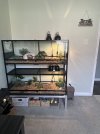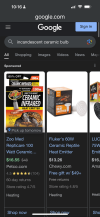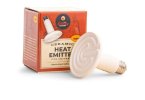TaylorTortoise
Well-Known Member
Does anyone know if it’s safe to have two heat bulbs together in a double dome light fixture? My one bulb has an all in one. 80 watts and the other is just a regular 75 wattage. We got new enclosures for our tortoises and we are trying to get the temps right again.



